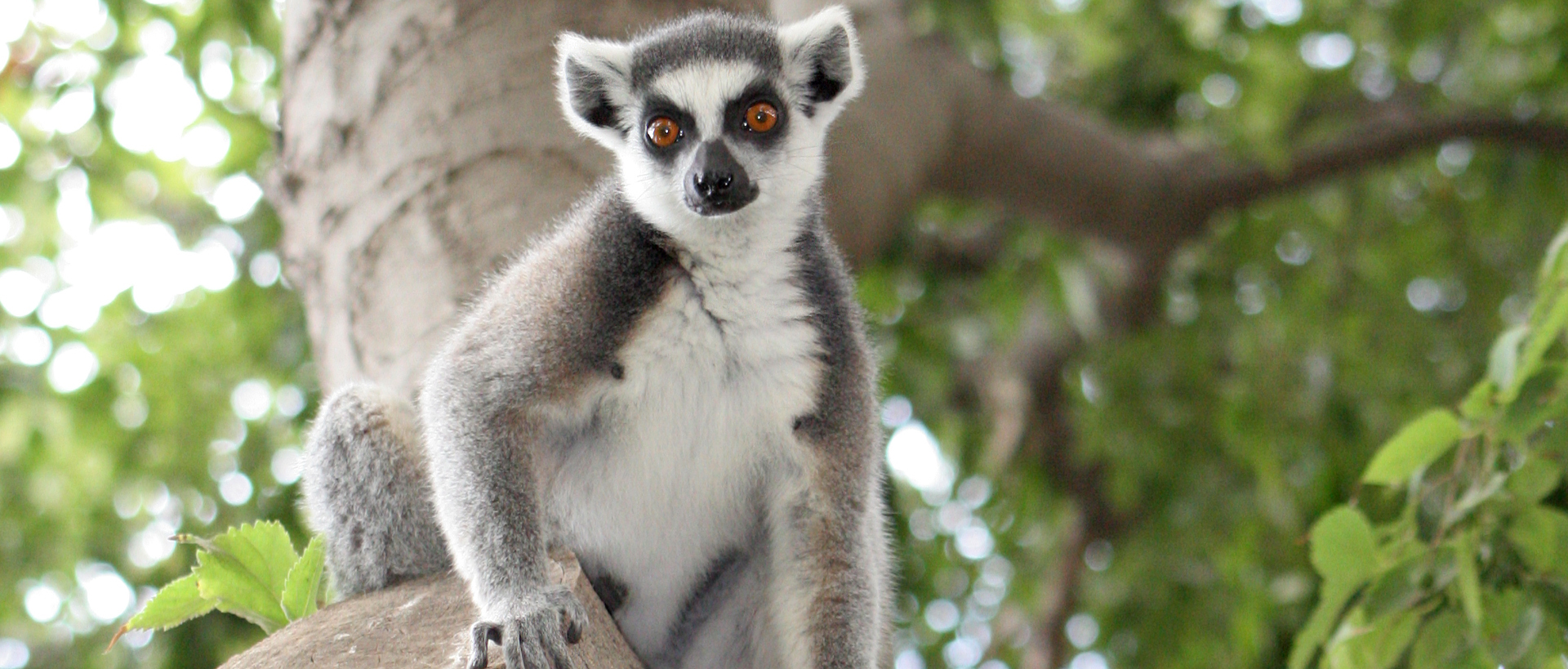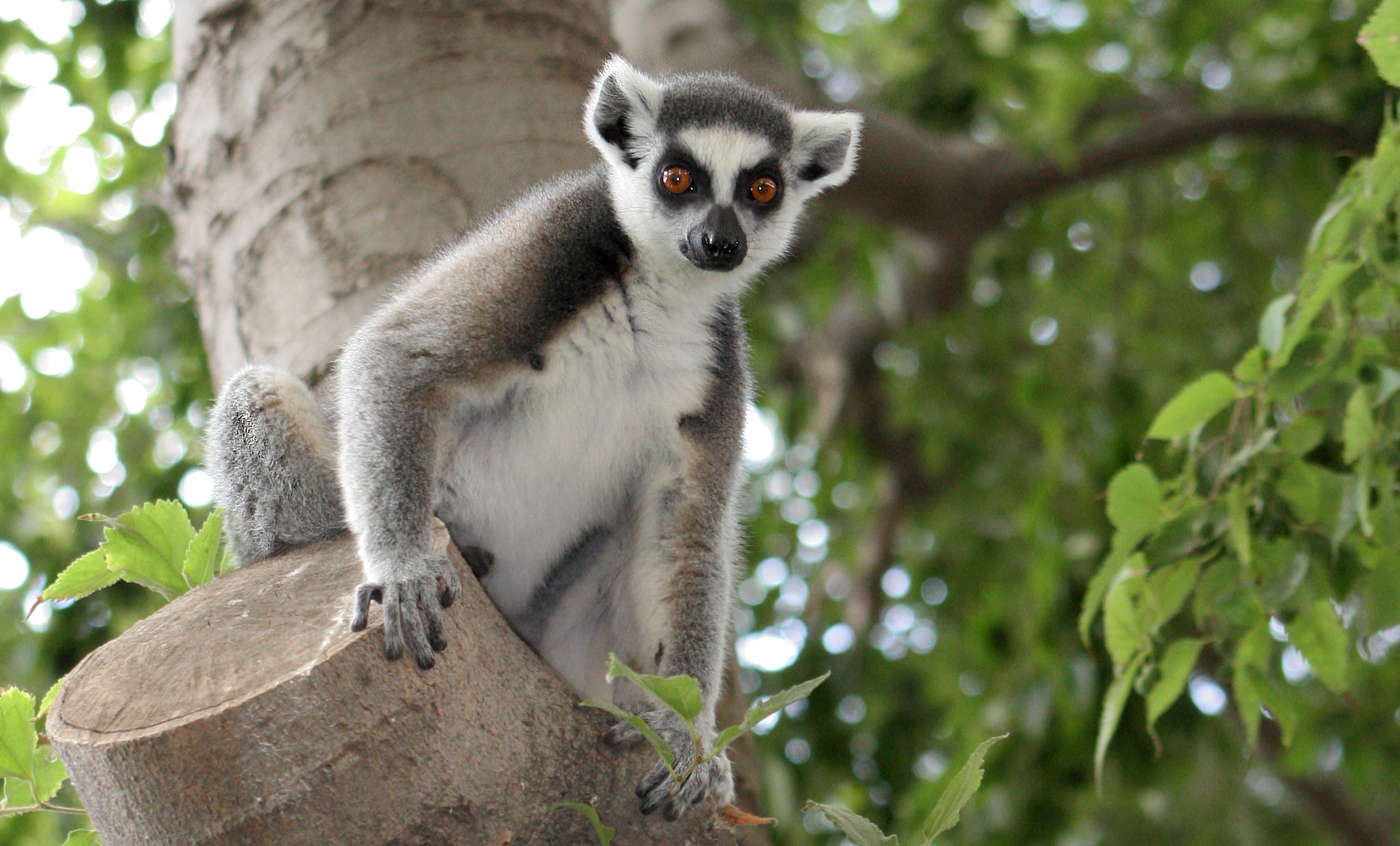Ring-tailed lemur
Unlike most lemurs, which are arboreal and nocturnal, this species is diurnal and can often be found on the ground of arid forests in southern Madagascar.
It feeds on all kinds of leaves, sprouts, roots and fruit and it is a gregarious animal that forms groups of up to thirty individuals, which are usually led by females.
Breeding program
Natural habit
Southern and south-western Madagascar.

- Distribution / Resident
- Breeding
- Wintering
- Subspecies
Risk level
- Extint
- Extint in the wild
- Critically endangered
- In Danger
- Vulnerable
- Near threatened
- Minor concern
- Insufficient data
- Not evaluated
Taxonomy
Physical characteristics
Biology
Reproduction
Biology
This slender lemur whose feet are longer than its arms, has a brownish colour on the back and a white hue on the underparts. The top of the head, its snout and the area around the eyes are black, while its cheeks and ears are white. Its most distinguishable feature is its long tail, with its trademark black-and-white stripes.
It lives in riparian forests, open forests, thorn forests and rather dry shrublands.
The ring-tailed lemur is an opportunistic omnivore that mainly feeds on fruits, leaves, flowers, grass, bark and resin, but it can also capture and eat insects, eggs and small vertebrates.
Gestation lasts for a little over fourth months and usually a single pup is born each time, although twins are born quite often. Mothers carry them on the chest for the first weeks and later on they carry them on their backs. Young lemurs start eating solid food after two months and they are weaned at fourth months.
Ring-railed lemurs are the exception to the characteristic behaviour of the rest of lemurs, as their habits are more arboreal. It is a diurnal animal, which differs from most lemurs as well. At early morning it can be easily spotted lying down sunbathing, stretching its limbs as if it were worshipping the Sun.
It forms groups of five to thirty individuals, organized in separate hierarchies of males and females, in which females are always the dominant ones. Its long and outstanding ringed tail, which is up when moving on the ground, is used as a visual means of communication.
Although many other lemur species are more endangered than the ring-tailed lemur, its populations have been decreasing lately in a great portion of its distribution area, due to the destruction of its habitat, hunting for human consumption and to the increase of the length and severity of dry seasons affection the southern part of the island of Madagascar.
The Zoo of Barcelona takes part in the EEP of this species.





